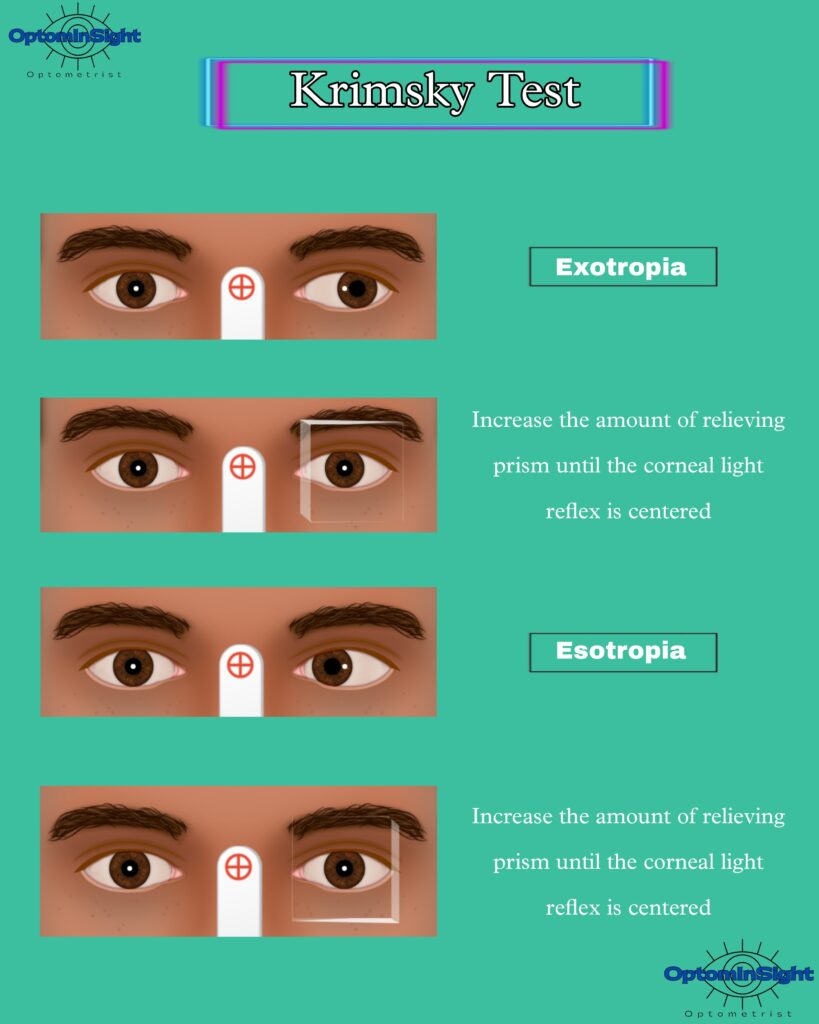The Krimsky test is a widely accepted method of assessing the angle of deviation in strabismic patients. The Krimsky test is a modified version of Hirschberg’s Test, based on the well-established principle of Hering’s law of equal innervation.
Krimsky test procedure
- Hold the source of light such as a pen torch in front of the examiner’s dominant eye and close the non-dominant eye.
- Shine the light from a distance of 2 feet in between the patient’s eye at the midline
- During this test, the patient focuses on a penlight held at a distance of 30cm. A prism is then placed in front of the eye with strabismus. The direction of the base of the prism is as per relieving prism (i.e. apex towards deviation).
- The amount of prism is gradually adjusted until the corneal reflexes are evenly positioned on both eyes.
In the Modified Krimsky Test, the patient fixates on a penlight, and prisms are added in front of the better eye (relieving prisms) until the reflection appears in the center of the deviated eye.
Krimsky test Interpretation:
The magnitude of the deviation is given by the amount of prism required to achieve centered corneal light reflex on the pupil.

Click below to learn about Hirschberg test
